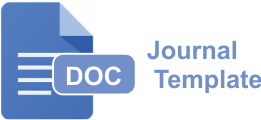USING JIGSAW TECHNIQUE IN IMPROVING STUDENTS’ READING COMPREHENSION AT SMK HANDAYANI LUWUK
DOI:
https://doi.org/10.32529/beej.v2i2.1563Keywords:
Jigsaw, reading comprehensionAbstract
This study aims to see the effect of Jigsaw techniques in improving students’ reading comprehension. The population in this research was students of X grade SMK Handayani Luwuk. The research sample involved all students using total sampling technique. The main instrument in collecting research data is test. Data analysis used t-test analysis to compare students’ means score. The calculation result shows that the t-counted value 8.271 is higher than the t-table 1.795. it means that improving students’ reading comprehension by applying Jigsaw technique was effective. The alternative hypothesis (Ha) is accepted and the null hypothesis (H0) is rejected. Therefore, it can be concluded that the application of Jigsaw technique is effective in improving students’ reading comprehension.References
Arronson, E. (2000). Jigsaw Classroom. http://www.jigsaw.org. Accessed June, 2018
Brown, H.D (2001). Teaching by Principles: and Interactive Approach to Language Pedagogy. New York: A Pearson Education Company
Klingner, Janette K (2007). Teaching Reading Comprehensionto students with Learning Difficulties. New York: The Guildford Press.
Nunan, David (1991). Second Language Teaching & Learning. Boston, MA: Heile & Heinle Publishers
Nuttal, C (1985). Teaching Reading Skills in a Foreign Language. London
Nuttal, Christine (1996). Teaching Reading Skill in a Foreign Language. Oxford: Heinemman. Smith (1969) in Reid (1981: 457)
Richards, J.C and Renandya, W.A (Ed) (2002). Methodology in Language Teaching: An Anthology of Current Practice. Cambridge: Cambridge University Press
Slavin, Robert E. (1994) Educational Psychology, Theory and Practice Massachusett. USA: Allymand & Bacoon
Slavin, Robert E. (1995) Cooperative Learning Theory, Research and Practice Boston: Allyn and Bacoon
Sugiyono (2015). Metode Penelitian Kombinasi (Mix Methods). Bandung: Alfabeta



